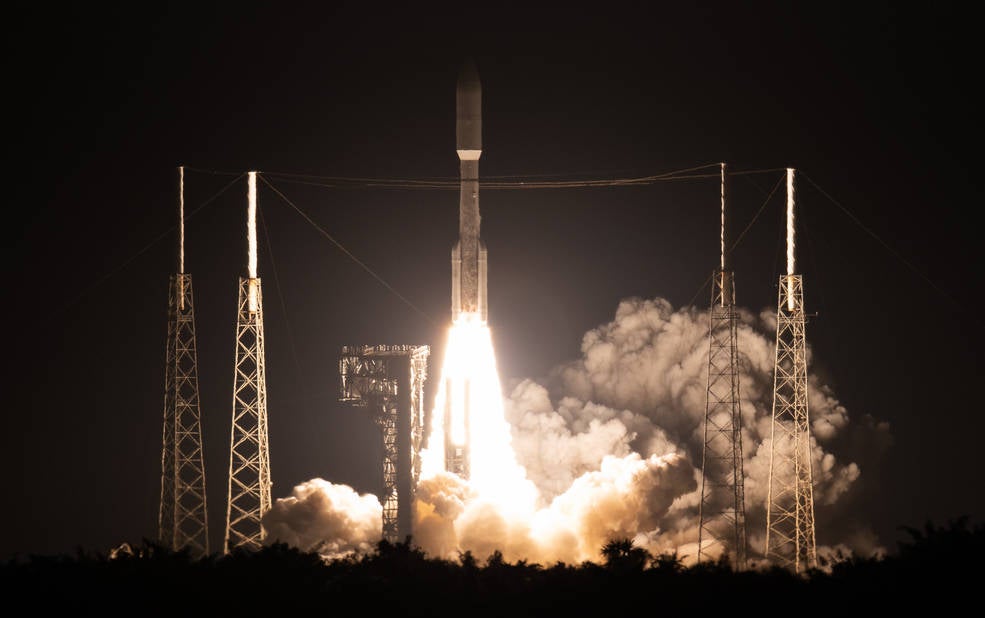Latest News

A ULA Atlas V rocket launches with the Department of Defense’s Space Test Program 3 (STP-3) mission on Dec. 7
Photo: NASA/Joel Kowsky
The U.S. Space Force’s Space Test Program-3 (STP-3) mission got spaceborne in the early morning hours of Dec. 7 after a 5:19 a.m. launch aboard a United Launch Alliance (ULA) Atlas V 551 rocket from Cape Canaveral Space Station’s Space Launch Complex-41.
Northrop Grumman‘s Space Test Program Satellite (STPSat)-6, the primary mission satellite, is carrying nine payloads, including the Department of Energy’s and National Nuclear Administration’s Space and Atmospheric Burst Reporting System (SABRS)-3 for nuclear detonation detection, the NASA Laser Communications Relay Demonstration (LCRD) payload, and seven experimental payloads prioritized by the Department of Defense’s Space Experiment Review Board, Space Force said.
“These payloads allow the United States and its partners to stay ahead of threats in space by delivering improved nuclear detonation detection capabilities and demonstrating new space technologies in the areas of space domain awareness, weather, and laser communication,” the service said. NASA’s White Sands Complex in Las Cruces, N.M., has operated STPSat-6.
NASA’s LCRD payload will demonstrate NASA’s first two-way laser relay communications system. It will send and receive data over invisible infrared lasers, which NASA said can enable data rates 10 to 100 times greater than Radio Frequency (RF) systems.
Space Force has said that STPSat-6 will improve the provision of intelligence to front-line forces to face China and Russia.
The rideshare satellite on STP-3 is Northrop Grumman’s Long Duration Propulsive Evolved Expendable Launch Vehicle Secondary Payload Adapter (LDPE-1). The LDPE launch series is to be “a freight train to space for experiments and prototypes in Geosynchronous Earth Orbit,” Space Force has said. “By rapidly placing multiple, diverse experimental payloads into this valuable orbit, LDPE provides critical data to inform future Space Force programs. More specifically, LDPE-1 hosts payloads that will advance technology concerning communications, space weather sensing, and space domain awareness.”
The Space Force’s Space Systems Command development corps’ prototype operations division at Kirtland, AFB, N.M., operates the LDPE-1 satellite.
“By rapidly placing multiple, diverse experimental payloads into orbit, the LDPE program provides critical data to aid in the development of future Space Force programs,” Space Force said.
Space Force said that STP-3 is the second launch of an Atlas V with the new Northrop Grumman-built Graphite Epoxy Motor 63 strap on solid rocket boosters “and a preview of the larger GEM 63XL boosters that will be used on future Vulcan Centaur launch vehicles.”
This article was originally published by our sister outlet Defense Daily.
Get the latest Via Satellite news!
Subscribe Now